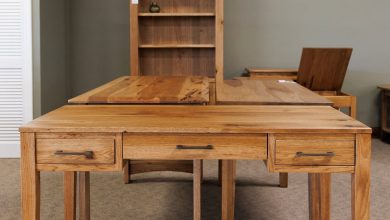Quartz vs Granite vs Quartzite: The Complete Countertop Guide
Choosing the right countertop material can feel overwhelming. We sat down with Columbus Granite, the best countertop shop in Columbus Ohio that we could find to get the inside scoop on three of the most popular options: quartz, granite, and quartzite. Here’s everything you need to know to make the right choice for your home.

What Is Quartzite Countertop Material?
Quartzite is a natural stone packed with quartz deposits, making it incredibly hard and durable. Think of it as having the elegant, flowing appearance of marble but with the toughness of granite. The high quartz content makes it extremely dense and one of the hardest countertop materials available.
One of quartzite’s standout features is its smooth, shiny polish that’s very difficult to damage. You’d have to work pretty hard to scratch it, and daily use won’t affect it at all. Unlike granite, quartzite doesn’t have much pitting, so it only needs a very thin layer of resin to fill tiny natural fissures.
What Is Granite Countertop Material?
Granite is also a natural stone, but it has a different crystal structure that gives it that distinctive speckled, granular look. It’s heat resistant and durable, though it contains slightly more resin than quartzite, so you’ll want to use a trivet for hot pans. The resin won’t harm the stone itself, but direct heat can damage it.
What Is Quartz Countertop Material?
Here’s where things get confusing: quartz and quartzite are completely different materials. Quartz countertops are man-made, created from natural quartz mixed with polymer resins that act as the binding agent. This manufacturing process means no natural fissures or pitting, and it creates the most stain-resistant countertop material available.
The polish on quartz isn’t quite as shiny as natural stone because of the resin content, but it’s extremely consistent and exceptionally hard.
Countertop Color Options and Visual Appearance
Quartzite offers whiter whites than granite, with a washy, fluid appearance similar to marble. You can also find deep blues, blacks, and rich saturated colors. The look tends to be more consistent and flowing rather than speckled.
Granite has a more granular, crystal structure that creates its signature speckled appearance. The whites aren’t as pure white as quartzite because of this structure, but you can find rich greens, blues, browns, and very saturated blacks. Darker granites can sometimes achieve a less speckled, more marble-like look.
Quartz provides the most consistency since it’s manufactured. You can get any look you want, including marble patterns, with perfect uniformity across your entire countertop.
Heat Resistance: Which Countertop Material Handles Hot Pans Best?
This is where these materials really differ:
Quartzite is highly heat resistant. While you should still use trivets as a precaution, the stone itself can handle heat well.
Granite is heat tolerant but has more resin, so always use a trivet for hot pans.
Quartz is NOT heat resistant. The polymer resins that make it so stain-resistant also make it vulnerable to heat damage. Always use trivets, and be careful with hot styling tools like flat irons and curling irons in bathrooms. Burns on quartz can be difficult to repair and may look like cigar burns.
How to Clean and Maintain Each Countertop Type
Quartz wins the stain-resistance battle hands down. It’s the most stain-resistant countertop material available. You’d have to work really hard to stain it. For daily cleaning, a slightly damp microfiber cloth works great. For tougher jobs, standard bathroom cleaners work well.
Quartzite is very stain-resistant because it’s so dense. If something does stain it, the stain won’t penetrate deep, making it relatively easy to remove with a poultice (a powder you mix and apply to draw out stains).
Granite can stain, especially in lighter colors, but stains can usually be removed with a poultice. If you notice a stain, clean it up and let it breathe for a few days first. Many stains will lighten on their own before you need to take further action.
Do Granite and Quartzite Countertops Need Sealing?
Natural stones (granite and quartzite) should be sealed at installation with a penetrating sealer that disappears into the stone. You may want to reapply sealer occasionally in high-use areas like around the kitchen sink or cooktop. This is easy to do yourself.
Polished quartz should NEVER be sealed. This is a common mistake. Sealing polished quartz will leave a residue that’s very difficult to remove, and you definitely don’t want that on your food prep surfaces.
Exception: Textured or matte-finish quartz (like concrete-look varieties) may need a one-time penetrating sealer at installation, but that’s it.
Can You Use These Countertops Outdoors?
Granite and quartzite can be used indoors and in covered outdoor areas. Some specific materials can even handle uncovered outdoor spaces.
Quartz is indoor-only. The polymer resins are highly susceptible to UV damage, so it will fade and deteriorate in direct sunlight.
What to Expect with Countertop Seams
All countertops will have seams somewhere, especially on larger kitchen islands or long expanses. Here’s what to know:
- Natural stone seams can be felt and seen, but they’re tight and minimal
- Book-matched stones (where slabs are mirrored) hide seams beautifully
- Quartz seams require more care since the material doesn’t book-match, but they’re still small
- Seams should never separate and don’t require maintenance
- Food won’t get stuck in properly installed seams
Can Damaged Countertops Be Repaired?
Quartz has an advantage here. Almost anything can be repaired: scratches, chips, and even most stains. Burns are trickier but still possible to address.
Granite and quartzite can also be repaired, though the process may differ since they’re natural stones.
Which One Is Right for You?
Choose quartzite if you:
- Love the look of marble but need something more durable
- Want the hardest natural stone option
- Prefer flowing, consistent patterns over speckled looks
- Don’t mind occasional resealing
Choose graniteif you:
- Like the classic speckled, granular appearance
- Want a natural stone with excellent heat tolerance
- Prefer rich, saturated colors
- Are comfortable with standard natural stone maintenance
Choose quartz if you:
- Have a busy family with kids in the kitchen
- Want the most stain-resistant option
- Prefer perfectly consistent coloring and patterns
- Are willing to always use trivets and heat protection
- Only need indoor countertops
The Bottom Line
There’s no single “best” countertop material. Quartzite offers marble beauty with superior durability. Granite provides classic good looks with proven performance. Quartz delivers unmatched stain resistance and consistency with some heat-related limitations.
Think about your lifestyle, cooking habits, and aesthetic preferences. Do you frequently set hot pans down without thinking? Natural stone might be better. Have kids who spill everything? Quartz could be your best friend. Want that flowing marble look without marble’s high maintenance? Quartzite is calling your name.
The good news? All three materials are excellent choices that will serve you well for decades with proper care. Visit a quality countertop shop to see samples in person and talk through your specific needs. What looks good in photos might surprise you in real life, and expert guidance can help you avoid common pitfalls and make a choice you’ll love for years to come.




